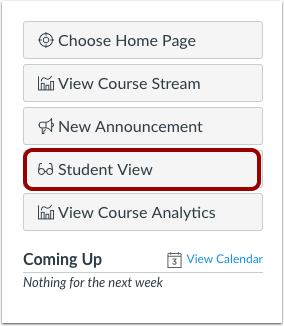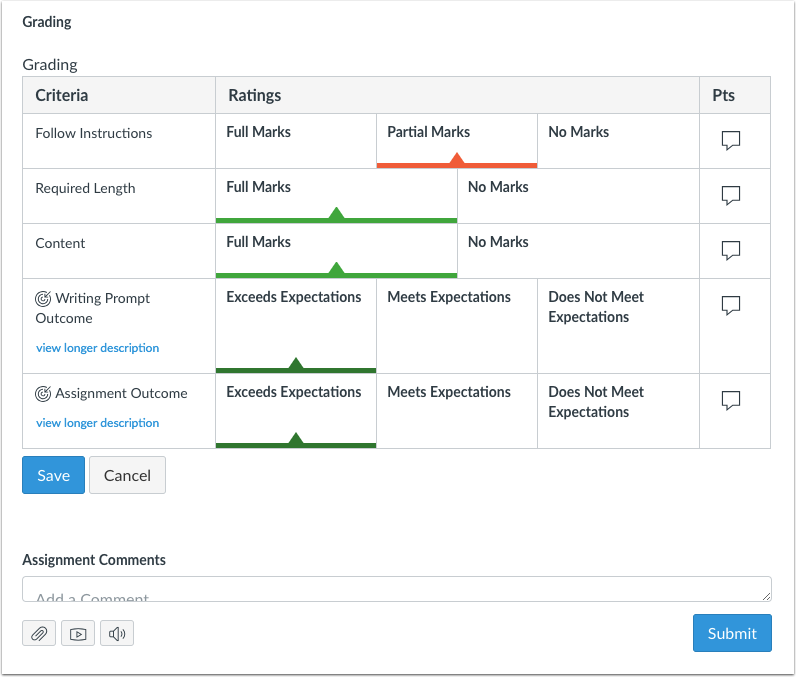
Page last updated: September 2021
Canvas regularly updates the learning platform to improve the overall user experience. Pertinent updates and new features for the current semester are listed below.

Page last updated: September 2021
Canvas regularly updates the learning platform to improve the overall user experience. Pertinent updates and new features for the current semester are listed below.
We have recently upgraded Canvas with New Integrations for Microsoft Office 365 and Google Drive. These integrations will allow faculty to add files stored in their Office 365 OneDrive or Google Drive into Canvas. Items from both can be placed directly into Modules, Content Pages or anywhere the Rich Content Editor is available. Additionally, faculty can now create collaborative Excel, Word, and PowerPoint files and share with the rest of the class using Canvas’ Collaborate function.
Students will also be able to directly submit documents stored in either MS OneDrive or Google Drive without having to download or save documents as different files. To accept these types of submissions faculty just need to configure assignments to accept “Online” submission type with the “File Upload” option enabled. *once submitted students will not be able to edit the submission, so no need to worry about students editing submissions past their due date.
For more information please review: Google Drive Integration or Microsoft Office 365 Integration
On January 2nd 2020, the existing Canvas Gradebook was replaced with the New Gradebook. This New Gradebook improves foundational items for Canvas grading and includes enhanced functionality for organization, flexibility, and communication.
To learn more about the new features, you can:
The Canvas course menu will receive a visual upgrade to improve navigation:
To learn more about the new Canvas menu visuals, visit the Canvas Release Notes.
Canvas Certificates is a tool that enables you to provide certificates for your students in order to recognize the completion of their work. This may be used, for example, to provide proof of meeting certain course prerequisites such as completing lab work.
Canvas Certificates is added as part of a module, allowing you to set up prerequisites and automate when the certificate is made available to a student. The prerequisites work exactly the same as regular Canvas module prerequisites.
Find more information on how to use Canvas Certificates on the Canvas Certificates help page.
Turnitin recently released a new Canvas integration, the Plagiarism Framework tool, which streamlines the process of creating Turnitin assignments within Canvas. With the Plagiarism Framework tool, Turnitin features are configured within Canvas Assignment settings. The new integration also works with Canvas Peer Review. Instructors can use the Canvas Speedgrader to grade these Turnitin assignments.
To learn how to create a Turnitin assignment within Canvas using the Plagiarism Framework tool, visit the Turnitin Guide on Creating a Canvas Plagiarism Framework assignment.
To compare the features offered by the Plagiarism Framework tool with Turnitin’s previous External Tool, view the Turnitin Canvas integration matrix to learn more about what each tool offers.
Entire modules can be duplicated within a course. The duplication option is located in the Settings menu for every supported module item. When a module is copied, the word "Copy" is added to the end of the module name and its items (e.g., Pages, Assignments, etc.). A copied module is placed directly below the original module. While the module is being copied, a loading indicator shows the copy is in progress.

Duplicating a module sets the new module to an unpublished status by default.
Notes: Modules with items that include Quizzes and External Tool integrations (e.g., Turnitin, Studymate) cannot be duplicated at this time. If you are using MasteryPaths in your course, duplicating a MasteryPath module will only copy the content but not retain the MasteryPath.
The Course Home Page includes a Student View button. This change allows instructors to access student view without having to open Course Settings.

Rubrics can be created without point values to create a non-scoring rubric. This feature promotes learning engagement by helping students focus on assignment feedback instead of point values.
When non-scoring rubrics is enabled, instructors can select the "Remove points from this rubric checkbox" in the rubric details. Selecting this checkbox removes points from rubrics and instructors can no longer see the "Use this rubric for assignment grading" and "Hide score total for assessment results" checkboxes.

When grading an assignment with a non-scoring rubric in SpeedGrader, instructors select ratings from the rubric for students to view, but points are not associated with each of the ratings.

For comprehensive documentation on current, previous, and forthcoming (beta) Canvas updates, view the Canvas Release Notes. However, please note that some features described in the Canvas Release Notes may not be available on our campus. Questions about Canvas updates and available features at CSUN can be directed to the Faculty Technology Center at ftc@csun.edu.